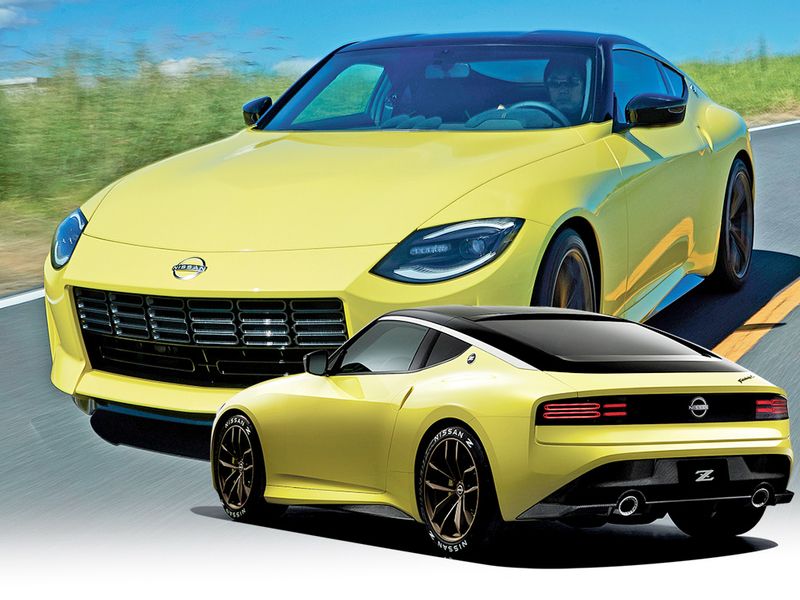
TOKYO — An automaker mired in red ink kicks off a radical revival plan, and the new boss takes the stage to dangle plans for a redesigned sports car that will generate buzz for a damaged brand.
This sounds like Nissan Motor Co. CEO Makoto Uchida unveiling the Z Proto last week.
But rewind time, and the scenario also describes Carlos Ghosn in late 1999.
Just months after parachuting into Nissan from Renault, Ghosn was fighting big losses, bloated capacity and slumping sales — much like Uchida today.
And when Ghosn took the stage before the Tokyo Motor Show that year to announce his Nissan Revival Plan to a packed audience, a key element was — you guessed it — the rebirth of the iconic Z.
Two decades later, Uchida is taking a page from the same playbook, but with a personal touch.
When Uchida unveiled the close-to-market prototype of the seventh-generation Z car last week, Nissan’s car-guy CEO made sure to stress the fact that his first-ever set of wheels was a gunmetal-gray 300ZX. He even showed a circa-1993 photo of his younger, shaggier self — with acid-washed shirt and gold chain — hanging his hand out its driver’s window with a smug grin.
“For me,” Uchida said, “the Z was love at first sight. It looked so cool, so desirable. Just looking at it was exciting for me. Every time I polished it, I would spend extra time admiring my favorite angle.”
Like Ghosn, Uchida is now positioning the redesigned Z car, one of Nissan’s most venerable nameplates, as the star player in his bid to rebuild Nissan’s aging product portfolio and, in turn, the company’s shattered earnings under his “Nissan Next” revised midterm business plan.
Nissan calls the coming product blitz “Nissan A to Z,” with A standing for the new Ariya electric crossover and Z, naturally, for the redesigned sports coupe. Uchida, who took office in December, launched the strategy this year as Nissan braces for its biggest-ever operating loss.
“The Z is our DNA. There is Z in everything we do,” Uchida said in the live-streamed event, which was broadcast to Z car fan clubs around the world. “It’s proof of our ability to do what others don’t dare to do, from A to Z.”
Keeping the Z alive wasn’t always a given. As recently as 2018, Nissan seemed to waver on what direction to go with the storied everyman’s coupe in a modern market where crossovers are king.
“The Z is a difficult market,” former Chief Planning Officer Philippe Klein conceded in an interview at the time. “If we do a complete new vehicle, what should it be to keep the passion alive? And we’re working very seriously on this.”
Today, Nissan executives are convinced they’ve found the answer in the Z Proto. Truth be told, even as Klein seemed uncertain of the Z’s fate, global design chief Alfonso Albaisa already had the green light for a successor to the 370Z that debuted in 2009. Albaisa was approached about it in March 2017.
“I was a bit shocked,” Albaisa said of his excitement at being told to start sketching. “But of course — my God, this is a dream come true.”
The design team sprang into action, requesting proposals from Nissan’s global studio network. The result was the retro-styled Z Proto, a vision for a next-gen Z that could arrive late next year.
Ivan Espinosa, senior vice president in charge of global product planning, said designers and engineers wrestled with how to balance performance, heritage and new technologies.
“Some cars, you follow a very strict schedule because they are big business decisions,” he said in an interview. “In the case of Z, it was a bit more of a dance, trying to understand: Are we convinced this is the right thing? It’s not something that’s pure business. It’s more emotional.”
The Z won’t be a high-volume vehicle. Nissan is dropping it from the European lineup, and there are no plans to sell it in China, which is now Nissan’s biggest market.
But the Z car is invaluable in raising the brand’s image at a critical moment for the company.
“The decision to make these cars usually comes at the moment when you need to move your brand up,” Espinosa said, noting that the Z and the GT-R supercar generate the most positive customer reaction of any Nissan nameplates. “If you put in that equation the benefit to the brand, the value is fantastic.”
The new Z should draw younger people and be a pride point for employees, whose morale has slumped amid management scandals and financial problems, Espinosa added.
The prototype stays true to the original Z car from a half-century ago but adds updates for modern drivers. Among the throwbacks to the first-generation 240Z, which debuted under the Datsun brand in the U.S., is the signature silhouette — a long hood, pointy nose and short, sloping rear deck that tails off slightly lower than the front fender for a slick profile. It also restores the original hood bulges from 1970s editions.
Modern flourishes include LED headlamps, lightweight carbon-fiber bodywork and a 12.3-inch digital meter display. A proposed high-output V-6 twin-turbocharged engine rounds out the update, and to underscore its sporty street cred, the car will come with a six-speed manual transmission.
The current 370Z is one of the oldest models in the brand’s lineup. For the production car, Nissan is rumored to be christening it the 400Z, with expectations that it will use a high-output 3.0-liter twin-turbo V-6 engine similar to the one in the Infiniti Q50 Red Sport 400, which generates 400 hp.
“When you drive the Z,” Uchida said, “you will feel it moving you and Nissan into the future.”